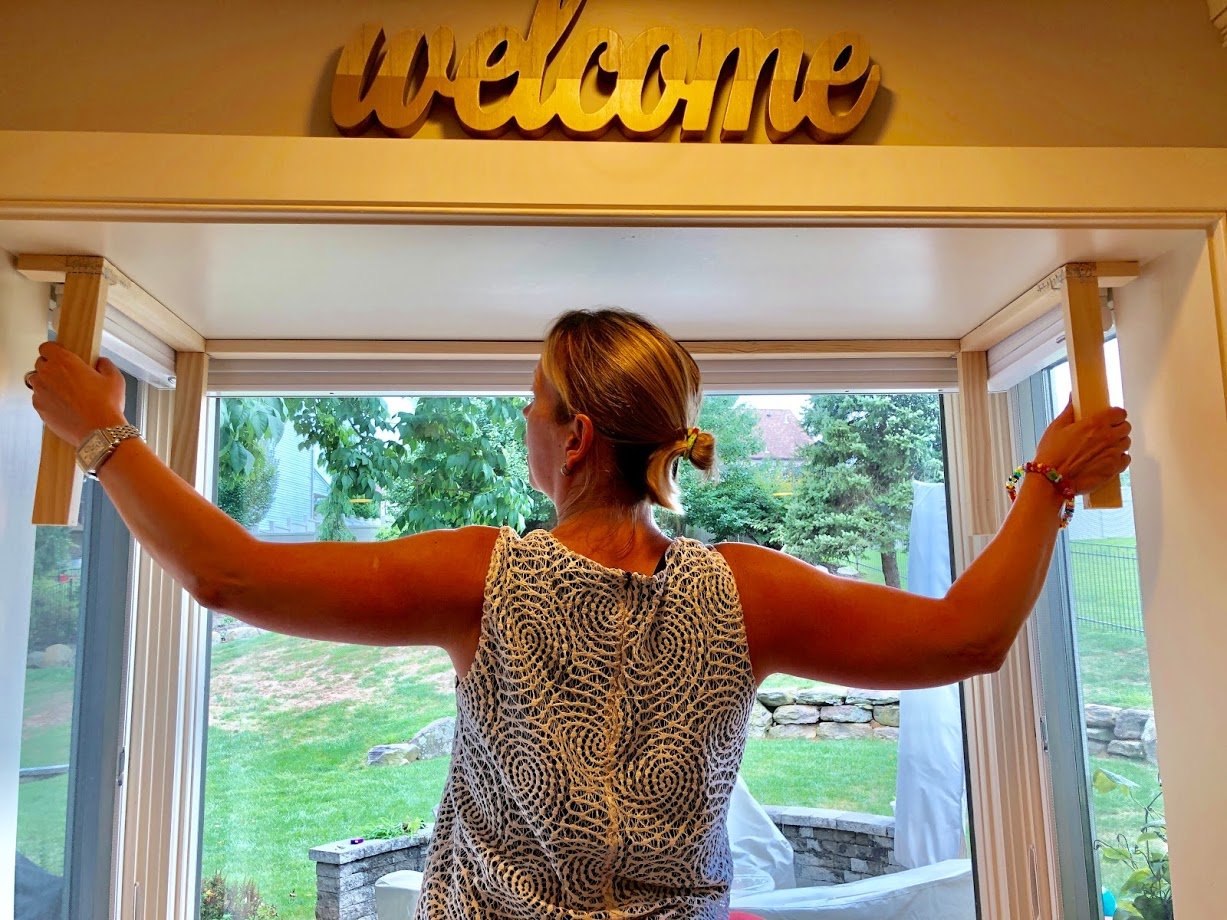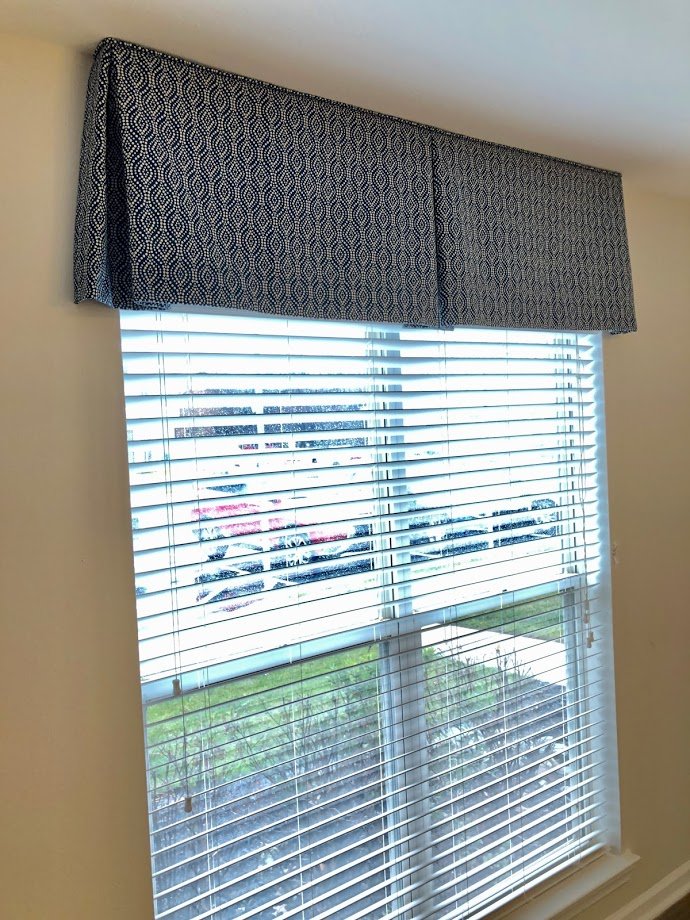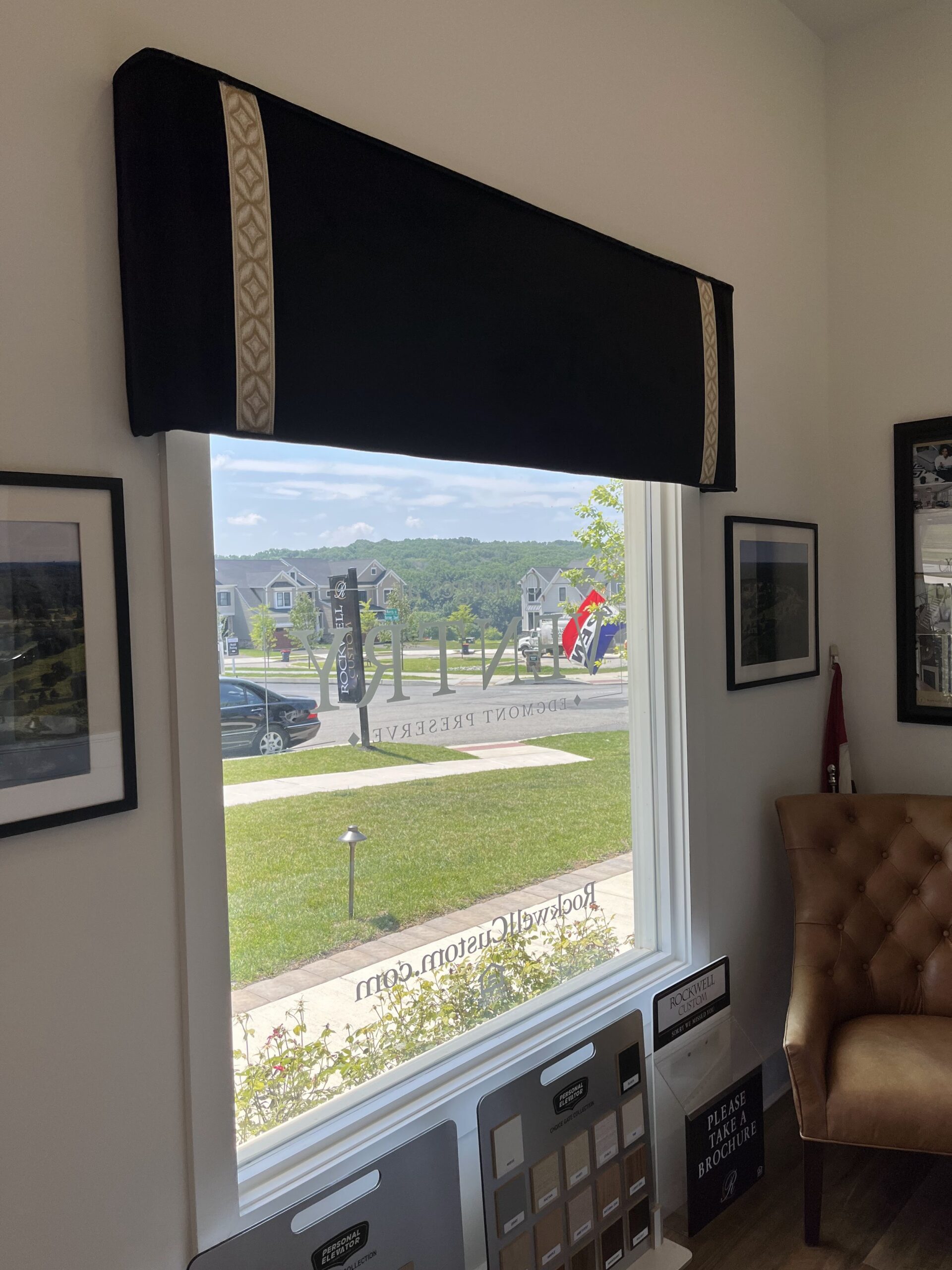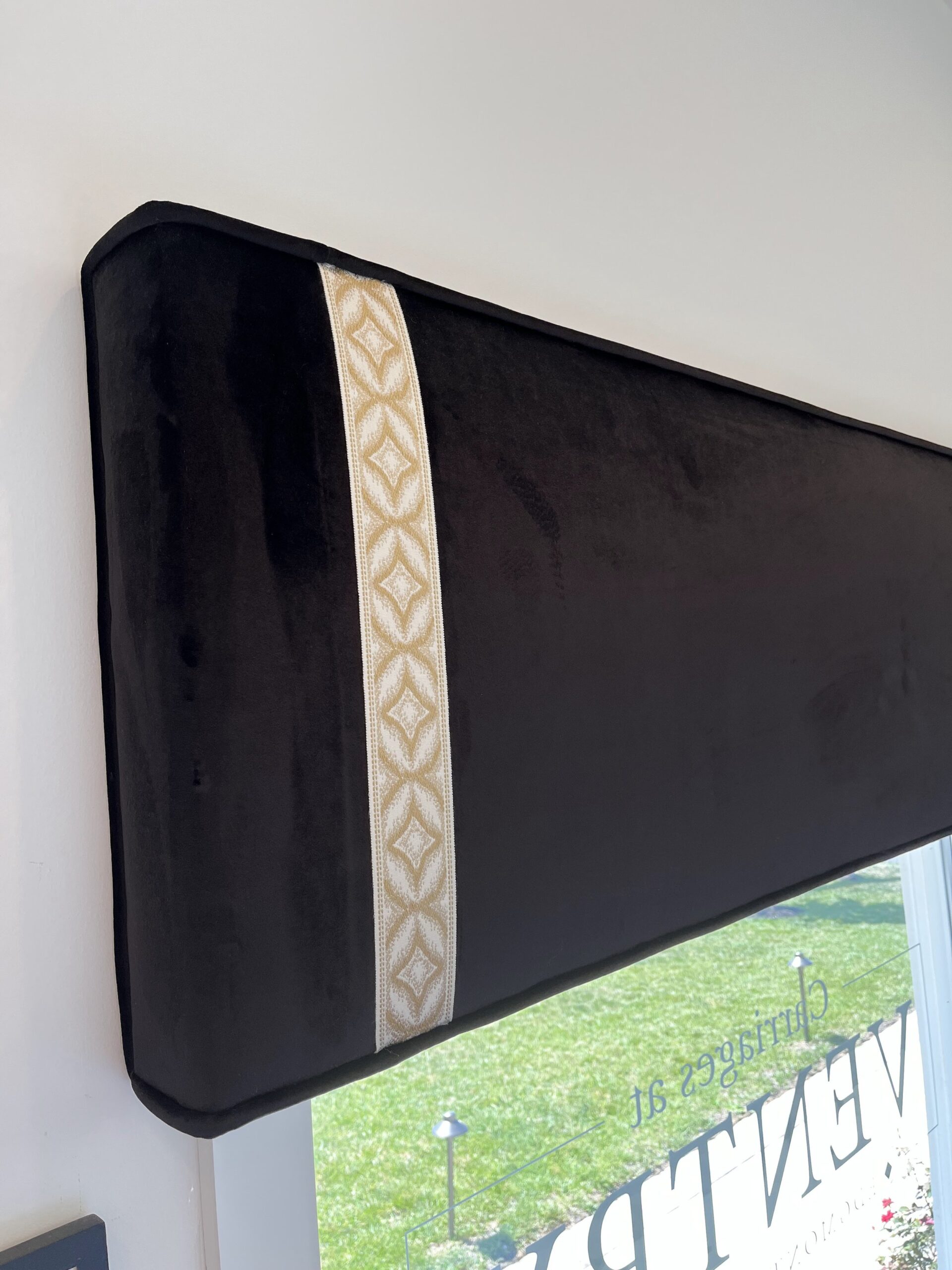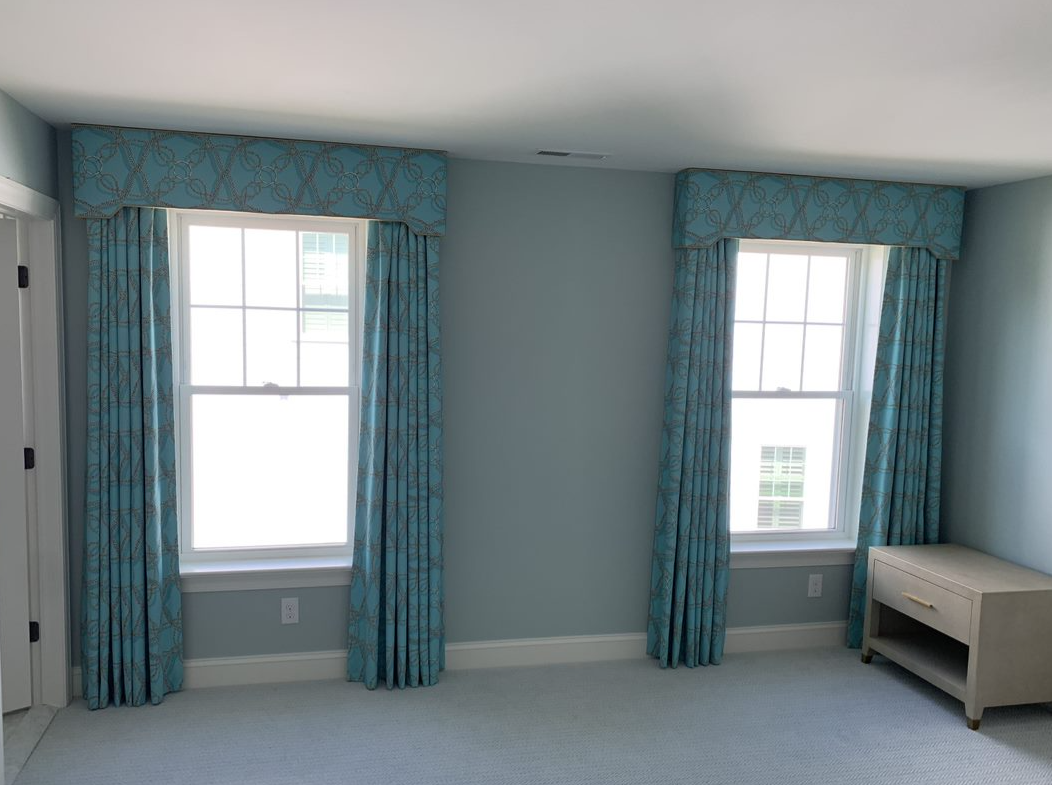What’s the difference between a valance and a cornice? Yes, they are both top treatments. Yes, they can both be used alone to dress a window or layered with other treatments.
But, there are some key differences you should know.
Valances
Tailored valance for a tricky bay window.
Ranging from simple to elaborate, a valance is a piece of decorative fabric usually hung from a rod, a piece of decorative hardware, or as we see above, a board.
Here we’ve created a tailored valance for this small box window, over pre-existing cellular shades. This space was very particular, and the valance needed to fit just right, so we created and dry fit this valance first.
This style provides an elegant upgrade for this unique window.
This valance has a more elegant look, because it’s stretched taut over the dust cap and the side legs. Not as stretched as a cornice, but still a very tailored approach.
Simplicity at its finest: A basic straight valance with inverted pleats.
Unlike our previous tailored valance, this look is a little more contemporary. This is a loose valance with no legs, no batting, no stretching, it’s very simple and economical.
While this is simple with just one color of fabric, you can use contrasting fabric in the pleat or in the piping to give even a ‘simple’ valance a more sophisticated look.
The beauty of customizing allows you to make necessary adjustments based on your personal needs. Valances don’t come in boxes!
Styles range from traditional to modern, and suit a wide variety of design aesthetics, making them a great option on their own or layered over shades, drapes, or blinds.
Cornices
A simple, straight cornice for Rockwell Custom, in collaboration with the talented Rose of Z Domus Designs.
Unlike a valance, a cornice is four sided, looking like half a box, the board on top is called a dust cap. The two boards on the side are called legs, then there is a front board – all of these are covered in dacron and face fabric.
You want to use a cornice when a structured, tailored appearance is desired. Like this cornice, a collaboration with the talented Rose of Z Domus Designs, covered in black velvet fabric and embellished with two rows of trim on each side, giving each window an architectural and elegant look.
Decorative trim and self -fabric piping provide a finished look.
On all our cornices, we run either self or contrasting piping. Here it is self fabric – meaning it’s the same fabric as the rest of the cornice. This piping not only gives the cornice a nice finished look, it also provides a utilitarian purpose, which is to make the cornice flush with the wall.
Since not all walls are created equal, this helps mitigate and cover those gaps. That way, if there is a gap between the leg of the cornice and the wall – that gap is covered. Pretty, finished and practical.
In love with the shape of you! A lovely, shaped cornice for the fabulous Linda Phillips Design.
Not all cornices have to be straight and simple. A shaped cornice, like this one here, from the talented Linda Phillips Design, is layered over custom drapes.
This cornice is upholstered in the same fabric used for the drapes, with a contrast piping that accentuates the shape of the cornice and complements the fabric.
Cornices can be used to hide window treatment hardware, block unwanted light around the top of your window treatments, or just to add a pop of color to the room.
See more on Window Treatment Friday Live!
You’ll find more inspiring projects and tips on our weekly Window Treatment Friday Live series.
Subscribe to my YouTube channel, so you never miss an episode. If you can’t join us live on Facebook and Instagram at 9am on Fridays, you’ll always be able to catch up by watching the replay on YouTube.
